Artificial Intelligence Program Passes Entrance Exam, Can Be Accepted Into University

Artificial Intelligence Program Passes Entrance Exam, Can Be Accepted Into University
The National Institute of Informatics has developed an Artificial Intelligence (AI) program that was able to achieve an above-average score on a college entrance exam for the first time ever. The test covered five subjects including Math, Physics, and English.
Ultimately, the Institute is attempting to develop an AI that could perform well enough on Japan’s standardized college entrance exam to be accepted into the University of Tokyo, Japan’s highest-ranked university. And they hope to complete their task by 2021.
To date, the AI received a top score of 511 points out of 950, which is above the national average of 416 points.
According to the institute, the AI has at least an 80% chance of being accepted to 441 private universities and 33 national universities with that score, odds that would make any aspiring student quite happy.
Find out more at: http://futurism.com/links/artificial-intelligence-program-passes-entrance-exam-can-be-accepted-into-university/
More Posts from Curiositytherover and Others

Red-Tailed Hawks Attack Drone in NYC Park
In an update to the category “wildlife reactions to drones,” two red-tailed hawks in Brooklyn, New York’s very large and wooded Prospect Park recently attacked an illegal drone. The incident was reported by a birdwatcher, according to the newspaper DNAInfo. Prospect Park and Central Park in New York are known for having resident hawks, and two of them were likely the ones involved.
Rob Bate, who has been president of the Brooklyn Bird Club for the last three years, saw pilots launch the drone in a large meadow (the Nethermead). Shortly afterward, hawks set upon the machinery. Bate noted that the birds were in a “stoop” position, which signals an attack mode; they had their wings folded.
“They were really upset,” as Bate was quoted by DNAInfo. “They see a drone in the air, they take it as a competitive predator, like another hawk that’s coming into their territory. And [the drone] doesn’t behave right and it doesn’t go away and they get more excited. And they were going after it.
Solar System: Things to Know This Week
Our solar system is huge, let us break it down for you. Here are a few things you should know this week:
1. Closeup of a King

For the first time since it entered orbit around Jupiter in July, our Juno spacecraft has flown close to the king of planets—this time with its eyes wide open. During the long, initial orbit, Juno mission managers spent time checking out the spacecraft “from stem to stern,” but the science instruments were turned off as a precaution. During this latest pass, Juno’s camera and other instruments were collecting data the whole time. Initial reports show that all went well, and the team has released a new close-up view that Juno captured of Jupiter’s north polar region. We can expect to see more close-up pictures of Jupiter and other data this week.
+Check in with Juno
2. Getting Ready to Rocket

Our OSIRIS-REx mission leaves Earth next week, the first leg of a journey that will take it out to an asteroid called Bennu. The mission will map the asteroid, study its properties in detail, then collect a physical sample to send back home to Earth. The ambitious endeavor is slated to start off on Sept. 8.
+See what it takes to prep for a deep space launch
3. New Moon Rising

The Lunar Reconnaissance Orbiter (LRO) has already mapped the entire surface of Earth’s moon in brilliant detail, but the mission isn’t over yet. Lunar explorers still have questions, and LRO is poised to help answer them.
+See what’s next for the mission
4. A Mock-Eclipse Now

We don’t have to wait until next year to see the moon cross in front of the sun. From its vantage point in deep space, our Solar Dynamics Observatory (SDO) sometimes sees just that. Such an event is expected on Sept. 1.
+See the latest sun pictures from SDO
5. Jupiter’s Cousins

Our galaxy is home to a bewildering variety of Jupiter-like worlds: hot ones, cold ones, giant versions of our own giant, pint-sized pretenders only half as big around. Astronomers say that in our galaxy alone, a billion or more such Jupiter-like worlds could be orbiting stars other than our sun. And we can use them to gain a better understanding of our solar system and our galactic environment, including the prospects for finding life.
Want to learn more? Read our full list of the 10 things to know this week about the solar system HERE.
Make sure to follow us on Tumblr for your regular dose of space: http://nasa.tumblr.com

Researchers Discover Ultra-thin Diamond Nanothreads That Could Support Space Elevator
Today, in order to get to the Moon, an incredible logistical setup is required. From the training needed for astronauts, to the millions of dollars of equipment necessary for space travel, to the cost of rocket fuel—Space flight isn’t easy (or cheap). But what if one can reach the Moon by simply stepping into a small vehicle attached to a cable and pressing a button that says “Moon.”
If what you’re imagining is an elevator, then you are right.
It’s also an idea that several scientists have been trying to realize since 1895, and we have written a number of articles on the feasibility of this tech in the past. Now, with what researchers from the Pennsylvania State University discovered, we may be taking a step closer to achieving that idea.
When they applied alternating cycles of pressure to isolated, liquid-state benzene molecules, surprisingly, it was found that rings of carbon atoms assembled into neat and orderly chains, essentially forming strong ultra-thin diamond nanothreads.
Read more at: http://futurism.com/links/researchers-discover-ultra-thin-diamond-nanothreads-that-could-support-space-elevator/
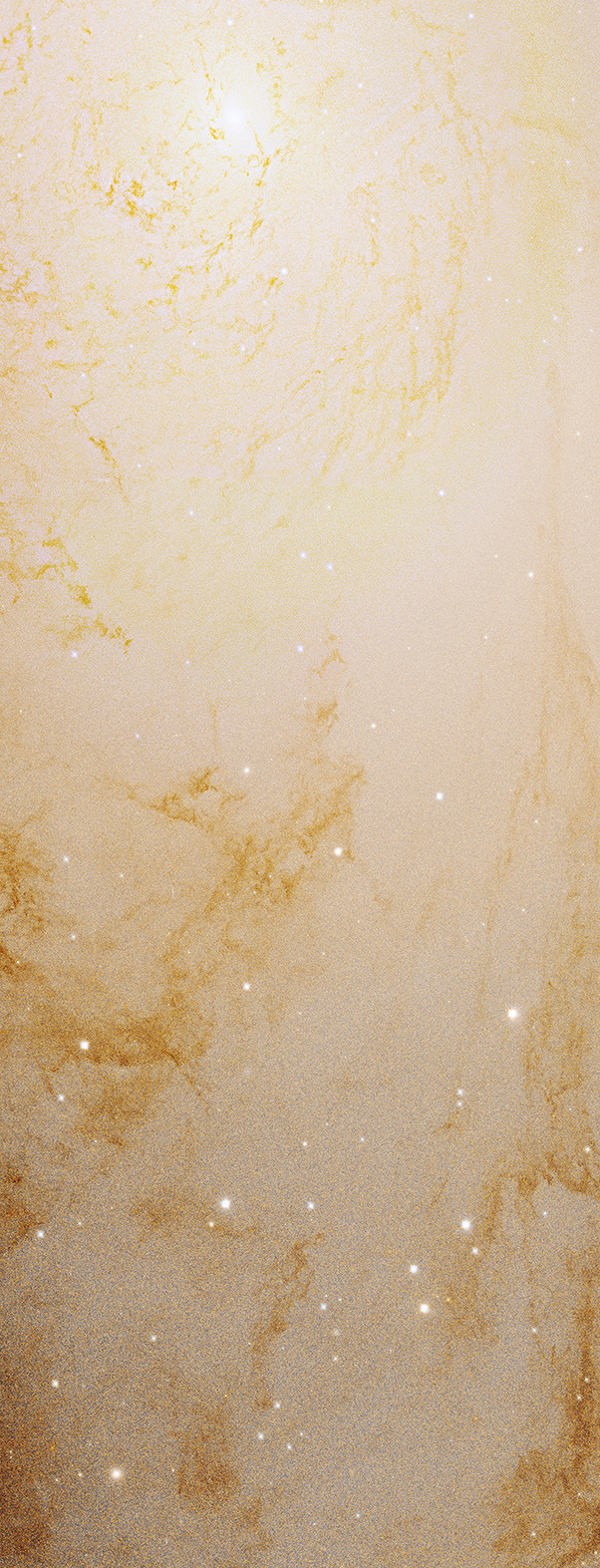

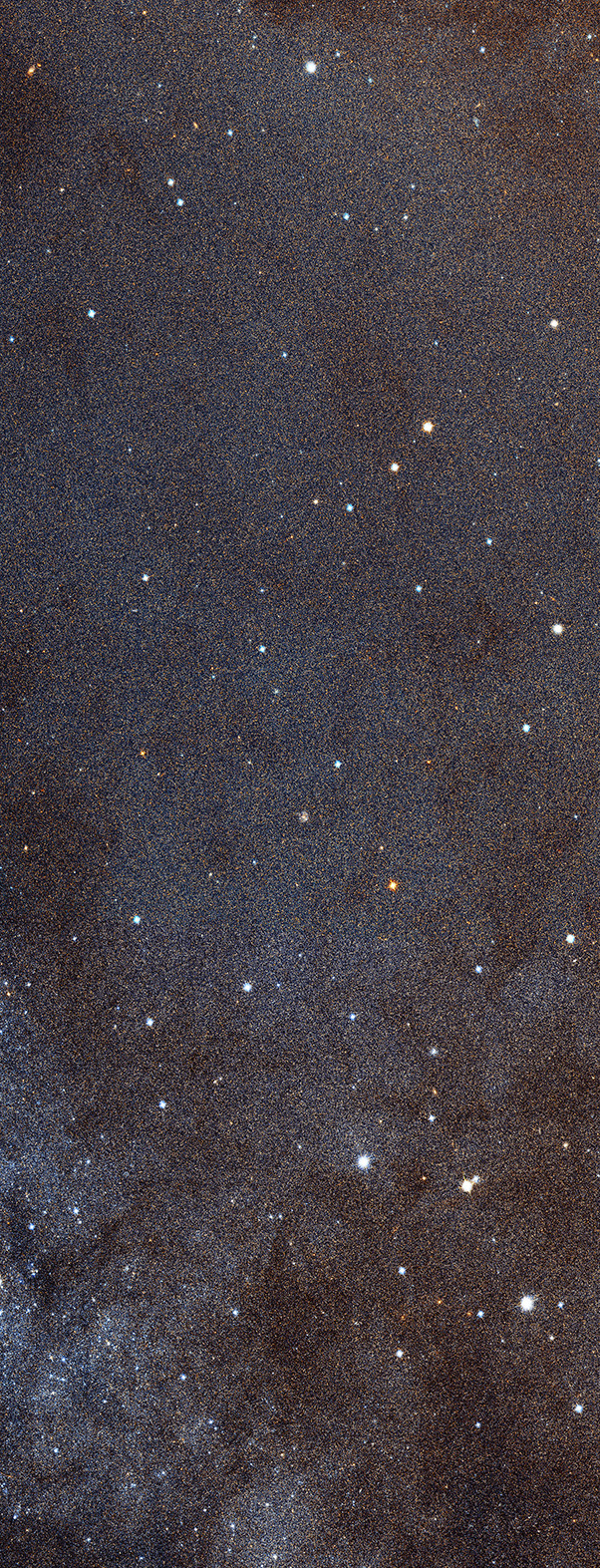

You just scrolled over a high-res segment of the Andromeda galaxy. How does NASA get its photos to look so spectacular? The same way as everyone else.
Practical Advice for Aspiring Space Explorers
Washington DC (SPX) Feb 12, 2016 If you’ve read past the title, you’ve probably consumed a lot of books and movies about space. Guess what? Flying in space isn’t just for science fiction characters. It’s a real job. Real people can apply for it, and real people-like you-can get hired to do it. Applying to be an astronaut is easy and costs you nothing. Like any other federal government job, the astronaut application is onl Full article

This Wristband Tells You Exactly What Vitamins You Need



What would Earth’s skies look like with Saturn’s rings?
Illustrator and author Ron Miller specializes in, among other things, incredible visualizations of other worlds. Now, Miller brings his visualizations back to Earth for a series exploring what our skies would look like with Saturn’s majestic rings. Miller strived to make the images scientifically accurate, adding nice touches like orange-pink shadows resulting from sunlight passing through the Earth’s atmosphere. He also shows the rings from a variety of latitudes and landscapes, from the U.S. Capitol building to Mayan ruins in Guatemala.
Images and text via

This stretchy, drug-delivering gel could be the Band-Aid of the future
Researchers in the US have developed a sticky, stretchable gel-like material that can be used as a “smart wound dressing”. Incorporating temperature sensors and drug reservoirs, the hydrogel bandage can release medicine in response to changes in skin temperature, and embedded LEDs even light up to let you know when your meds are running low.
The hydrogel matrix that makes up the dressing has numerous advantages over conventional cloth-based bandages. It’s highly flexible and stretches easily so can be applied to any area of the body, including joints like elbows or knees.
- ScienceAlert
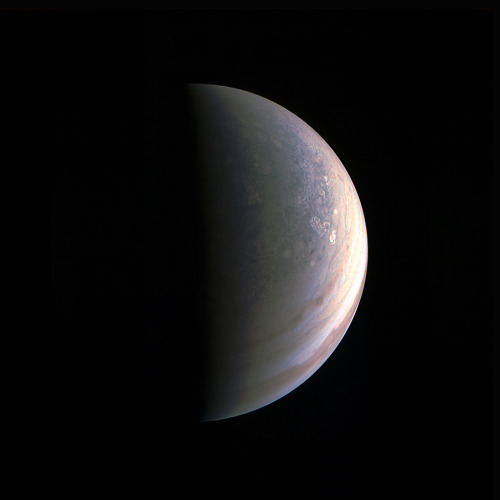
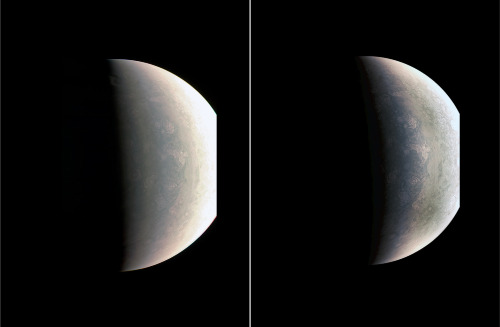
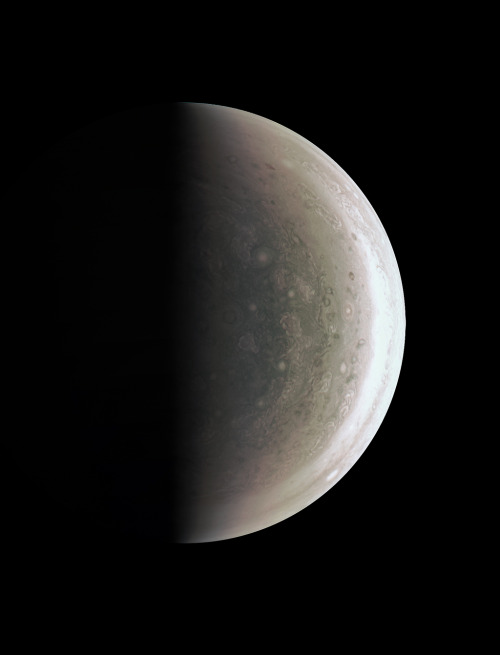
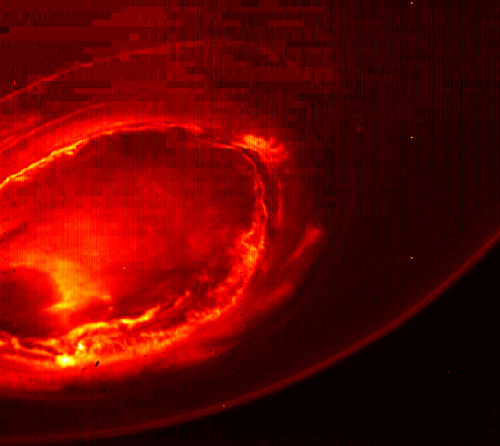
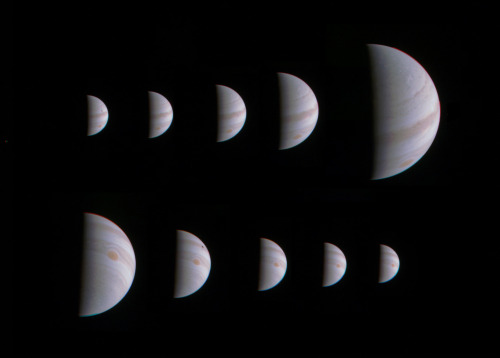
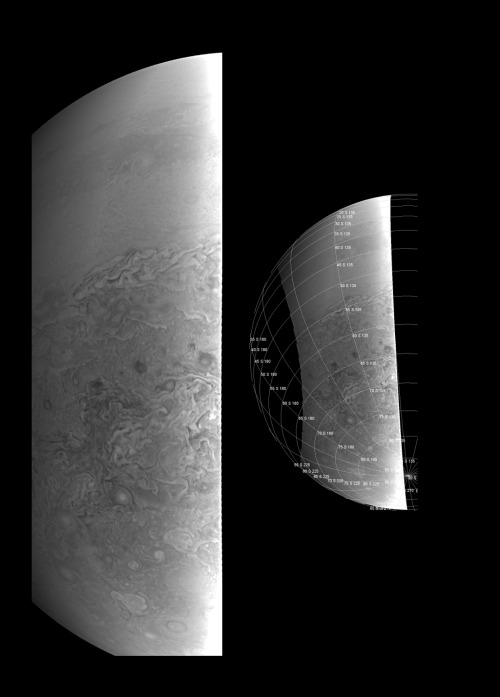
Jupiter’s North Pole Unlike Anything Encountered in Solar System
NASA’s Juno spacecraft has sent back the first-ever images of Jupiter’s north pole, taken during the spacecraft’s first flyby of the planet with its instruments switched on. The images show storm systems and weather activity unlike anything previously seen on any of our solar system’s gas-giant planets.
Juno successfully executed the first of 36 orbital flybys on Aug. 27 when the spacecraft came about 2,500 miles (4,200 kilometers) above Jupiter’s swirling clouds. The download of six megabytes of data collected during the six-hour transit, from above Jupiter’s north pole to below its south pole, took one-and-a-half days. While analysis of this first data collection is ongoing, some unique discoveries have already made themselves visible.
“First glimpse of Jupiter’s north pole, and it looks like nothing we have seen or imagined before,” said Scott Bolton, principal investigator of Juno from the Southwest Research Institute in San Antonio. “It’s bluer in color up there than other parts of the planet, and there are a lot of storms. There is no sign of the latitudinal bands or zone and belts that we are used to – this image is hardly recognizable as Jupiter. We’re seeing signs that the clouds have shadows, possibly indicating that the clouds are at a higher altitude than other features.”
One of the most notable findings of these first-ever pictures of Jupiter’s north and south poles is something that the JunoCam imager did not see.
“Saturn has a hexagon at the north pole,” said Bolton. “There is nothing on Jupiter that anywhere near resembles that. The largest planet in our solar system is truly unique. We have 36 more flybys to study just how unique it really is.”
Along with JunoCam snapping pictures during the flyby, all eight of Juno’s science instruments were energized and collecting data. The Jovian Infrared Auroral Mapper (JI-RAM), supplied by the Italian Space Agency, acquired some remarkable images of Jupiter at its north and south polar regions in infrared wavelengths.
“JIRAM is getting under Jupiter’s skin, giving us our first infrared close-ups of the planet,” said Alberto Adriani, JIRAM co-investigator from Istituto di Astrofisica e Planetologia Spaziali, Rome. “These first infrared views of Jupiter’s north and south poles are revealing warm and hot spots that have never been seen before. And while we knew that the first ever infrared views of Jupiter’s south pole could reveal the planet’s southern aurora, we were amazed to see it for the first time. No other instruments, both from Earth or space, have been able to see the southern aurora. Now, with JIRAM, we see that it appears to be very bright and well structured. The high level of detail in the images will tell us more about the aurora’s morphology and dynamics.”
Among the more unique data sets collected by Juno during its first scientific sweep by Jupiter was that acquired by the mission’s Radio/Plasma Wave Experiment (Waves), which recorded ghostly- sounding transmissions emanating from above the planet. These radio emissions from Jupiter have been known about since the 1950s but had never been analyzed from such a close vantage point.
“Jupiter is talking to us in a way only gas-giant worlds can,” said Bill Kurth, co-investigator for the Waves instrument from the University of Iowa, Iowa City. “Waves detected the signature emissions of the energetic particles that generate the massive auroras which encircle Jupiter’s north pole. These emissions are the strongest in the solar system. Now we are going to try to figure out where the electrons come from that are generating them.”
The Juno spacecraft launched on Aug. 5, 2011, from Cape Canaveral, Florida and arrived at Jupiter on July 4, 2016. JPL manages the Juno mission for the principal investigator, Scott Bolton, of Southwest Research Institute in San Antonio. Juno is part of NASA’s New Frontiers Program, which is managed at NASA’s Marshall Space Flight Center in Huntsville, Alabama, for NASA’s Science Mission Directorate. Lockheed Martin Space Systems, Denver, built the spacecraft. Caltech in Pasadena, California, manages JPL for NASA.
IMAGE 1….As NASA’s Juno spacecraft closed in on Jupiter for its Aug. 27, 2016 pass, its view grew sharper and fine details in the north polar region became increasingly visible. The JunoCam instrument obtained this view on August 27, about two hours before closest approach, when the spacecraft was 120,000 miles (195,000 kilometers) away from the giant planet (i.e., for Jupiter’s center). Unlike the equatorial region’s familiar structure of belts and zones, the poles are mottled with rotating storms of various sizes, similar to giant versions of terrestrial hurricanes. Jupiter’s poles have not been seen from this perspective since the Pioneer 11 spacecraft flew by the planet in 1974.
IMAGE 2….Storm systems and weather activity unlike anything encountered in the solar system are on view in these color images of Jupiter’s north polar region from NASA’s Juno spacecraft. Two versions of the image have been contrast-enhanced differently to bring out detail near the dark terminator and near the bright limb. The JunoCam instrument took the images to create this color view on August 27, when the spacecraft was about 48,000 miles (78,000 kilometers) above the polar cloud tops. A wavy boundary is visible halfway between the grayish region at left (closer to the pole and the nightside shadow) and the lighter-colored area on the right. The wavy appearance of the boundary represents a Rossby wave – a north-south meandering of a predominantly east-west flow in an atmospheric jet. This may be caused by a difference in temperature between air to the north and south of this boundary, as is often the case with such waves in Earth’s atmosphere. The polar region is filled with a variety of discrete atmospheric features. Some of these are ovals, but the larger and brighter features have a “pinwheel” shape reminiscent of the shape of terrestrial hurricanes. Tracking the motion and evolution of these features across multiple orbits will provide clues about the dynamics of the Jovian atmosphere. This image also provides the first example of cloud shadowing on Jupiter: near the top of the image, a high cloud feature is seen past the normal boundary between day and night, illuminated above the cloud deck below. While subtle color differences are visible in the image, some of these are likely the result of scattered light within the JunoCam optics. Work is ongoing to characterize these effects.
IMAGE 3….This image from NASA’s Juno spacecraft provides a never-before-seen perspective on Jupiter’s south pole. The JunoCam instrument acquired the view on August 27, 2016, when the spacecraft was about 58,700 miles (94,500 kilometers) above the polar region. At this point, the spacecraft was about an hour past its closest approach, and fine detail in the south polar region is clearly resolved. Unlike the equatorial region’s familiar structure of belts and zones, the poles are mottled by clockwise and counterclockwise rotating storms of various sizes, similar to giant versions of terrestrial hurricanes. The south pole has never been seen from this viewpoint, although the Cassini spacecraft was able to observe most of the polar region at highly oblique angles as it flew past Jupiter on its way to Saturn in 2000
IMAGE 4….This infrared image gives an unprecedented view of the southern aurora of Jupiter, as captured by NASA’s Juno spacecraft on August 27, 2016. The planet’s southern aurora can hardly be seen from Earth due to our home planet’s position in respect to Jupiter’s south pole. Juno’s unique polar orbit provides the first opportunity to observe this region of the gas-giant planet in detail. Juno’s Jovian Infrared Auroral Mapper (JIRAM) camera acquired the view at wavelengths ranging from 3.3 to 3.6 microns – the wavelengths of light emitted by excited hydrogen ions in the polar regions. The view is a mosaic of three images taken just minutes apart from each other, about four hours after the perijove pass while the spacecraft was moving away from Jupiter.
IMAGE 5….This montage of 10 JunoCam images shows Jupiter growing and shrinking in apparent size before and after NASA’s Juno spacecraft made its closest approach on August 27, 2016, at 12:50 UTC. The images are spaced about 10 hours apart, one Jupiter day, so the Great Red Spot is always in roughly the same place. The small black spots visible on the planet in some of the images are shadows of the large Galilean moons. The images in the top row were taken during the inbound leg of the orbit, beginning on August 25 at 13:15 UTC when Juno was 1.4 million miles (2.3 million kilometers) away from Jupiter, and continuing to August 27 at 04:45 UTC when the spacecraft was 430,000 miles (700,000 kilometers) away. The images in the bottom row were obtained during the outbound leg of the orbit. They begin on August 28 at 00:45 UTC when Juno was 750,000 miles (920,000 kilometers) away and continue to August 29 at 16:45 UTC when the spacecraft was 1.6 million miles (2.5 million kilometers) away.
IMAGE 6….This image provides a close-up view of Jupiter’s southern hemisphere, as seen by NASA’s Juno spacecraft on August 27, 2016. The JunoCam instrument captured this image with its red spectral filter when the spacecraft was about 23,600 miles (38,000 kilometers) above the cloud tops. The image covers an area from close to the south pole to 20 degrees south of the equator, centered on a longitude at about 140 degrees west. The transition between the banded structures near the equator and the more chaotic polar region (south of about 65 degrees south latitude) can be clearly seen. The smaller version at right of this image shows the same view with a latitude/longitude grid overlaid. This image has been processed to remove shading effects near the terminator – the dividing line between day and night – caused by Juno’s orbit.

Scientists Make New Form of Gold That’s Nearly as Light as Air
Researchers in Switzerland have been able to produce gold foam that is almost as light as air. In fact, 98% of it consists of air; the rest is made up of 20-carat gold and milk protein. According to materials scientist Raffaele Mezzenga from ETH Zurich, this gold aerogel is a thousand times lighter than any other gold alloy, is lighter than water, and is almost as light as air itself.
Read more at: http://futurism.com/links/scientists-make-new-form-of-gold-thats-nearly-as-light-as-air/
-
 atlantethan liked this · 8 years ago
atlantethan liked this · 8 years ago -
 majortomoshares reblogged this · 8 years ago
majortomoshares reblogged this · 8 years ago -
 majortomoshares reblogged this · 8 years ago
majortomoshares reblogged this · 8 years ago -
 melsworldofnonsense reblogged this · 9 years ago
melsworldofnonsense reblogged this · 9 years ago -
 mietekmac reblogged this · 9 years ago
mietekmac reblogged this · 9 years ago -
 coasterbeing liked this · 9 years ago
coasterbeing liked this · 9 years ago -
 the-friend-with-little-benefits liked this · 9 years ago
the-friend-with-little-benefits liked this · 9 years ago -
 opotop-blog liked this · 9 years ago
opotop-blog liked this · 9 years ago -
 stardustsilver777-blog liked this · 9 years ago
stardustsilver777-blog liked this · 9 years ago -
 governedanarchy reblogged this · 9 years ago
governedanarchy reblogged this · 9 years ago -
 lophiusdragon liked this · 9 years ago
lophiusdragon liked this · 9 years ago -
 mahblerg-blog liked this · 9 years ago
mahblerg-blog liked this · 9 years ago -
 wheretheseaandskymeet reblogged this · 9 years ago
wheretheseaandskymeet reblogged this · 9 years ago -
 partyinvalhalla reblogged this · 9 years ago
partyinvalhalla reblogged this · 9 years ago -
 magnetoplasma reblogged this · 9 years ago
magnetoplasma reblogged this · 9 years ago -
 nightorchid-sorcery liked this · 9 years ago
nightorchid-sorcery liked this · 9 years ago -
 teaologie reblogged this · 9 years ago
teaologie reblogged this · 9 years ago -
 genqueue reblogged this · 9 years ago
genqueue reblogged this · 9 years ago -
 blindmen6 liked this · 9 years ago
blindmen6 liked this · 9 years ago -
 elfboi reblogged this · 9 years ago
elfboi reblogged this · 9 years ago -
 forbiddenpebble liked this · 9 years ago
forbiddenpebble liked this · 9 years ago -
 brainontheceiling-blog reblogged this · 9 years ago
brainontheceiling-blog reblogged this · 9 years ago -
 charlotata liked this · 9 years ago
charlotata liked this · 9 years ago -
 gingerm0nkey reblogged this · 9 years ago
gingerm0nkey reblogged this · 9 years ago -
 sariadragon reblogged this · 9 years ago
sariadragon reblogged this · 9 years ago -
 anime-crazy liked this · 9 years ago
anime-crazy liked this · 9 years ago -
 little-lady-trashcan reblogged this · 9 years ago
little-lady-trashcan reblogged this · 9 years ago -
 nsome reblogged this · 9 years ago
nsome reblogged this · 9 years ago -
 derivedshamrock liked this · 9 years ago
derivedshamrock liked this · 9 years ago -
 hourthenaive-blog liked this · 9 years ago
hourthenaive-blog liked this · 9 years ago -
 wasabish reblogged this · 9 years ago
wasabish reblogged this · 9 years ago -
 notangelmorell liked this · 9 years ago
notangelmorell liked this · 9 years ago -
 m3ttmurdock reblogged this · 9 years ago
m3ttmurdock reblogged this · 9 years ago -
 ifyourelisteningurtheresistance liked this · 9 years ago
ifyourelisteningurtheresistance liked this · 9 years ago -
 starkindustrics liked this · 9 years ago
starkindustrics liked this · 9 years ago -
 stevorym liked this · 9 years ago
stevorym liked this · 9 years ago -
 farouha-luv-blog liked this · 9 years ago
farouha-luv-blog liked this · 9 years ago